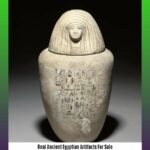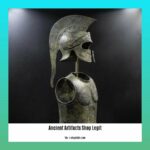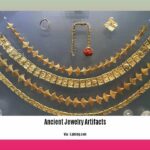Unveiling the Ancient Wonders of Kourion, Cyprus takes you on a captivating journey through a city steeped in history. As a seasoned archaeologist specializing in Cypriot archaeology, I bring a wealth of knowledge and expertise to this exploration of Kourion’s remarkable past. Join me as we delve into the mysteries of this enchanting city, unraveling its ancient architecture, uncovering hidden artifacts, and immersing ourselves in the rich cultural practices that have shaped its identity. Prepare to be amazed by the profound significance and timeless beauty that await in Kourion, Cyprus.

Key Takeaways:
- Kourion, also known as Curium, was an important ancient city-state on the southwestern coast of Cyprus.
- Greek settlers from Argos arrived at Kourion in the twelfth century BCE after the collapse of Mycenaean palaces.
- The city experienced significant damage from five earthquakes in the seventeenth century but was partially rebuilt.
- Kourion is managed by the Cyprus Department of Antiquities and is located in the small town of Episkopi on the west coast of Limassol.
- The archaeological site of Kourion is one of the most renowned ancient attractions in Cyprus, situated 18km west of Limassol.
- The site is home to a significant theater located on the southern end of the hill on which the city is built.
- The archaeological remains at Kourion primarily date from the Roman and Late Roman/Early Byzantine periods.
- In addition to its historical significance, Kourion is also a popular destination for paragliding in Cyprus.
- The earliest known occupation in the Kouris River valley is the hilltop settlement of Sotira-Teppes, dating back to the Ceramic Neolithic period.
- During the Cypro-Geometric period, the Kingdom of Kourion was established and had important trade connections with mainland Greece.
- Cyrus I of Persia extended Persian authority over the Kingdom of Kourion in 546 BCE.
- Kourion played a role in the Ionian Revolt, with its king aligning himself with a Cypriot alliance against the Persians.
Sources:
1. Kourion – Wikipedia
2. Kourion Archaeological Site | Ancient Kourion Theatre | Limassol
Ancient Kourion, Cyprus: Exploring the Marvels of a Bygone Era
As we delve into the fascinating realm of ancient civilizations, few destinations resonate as profoundly as Kourion in Cyprus. With its rich historical heritage and captivating wonders, this enchanting city offers a remarkable journey back in time. Let’s unravel the mysteries of ancient Kourion, Cyprus, and lose ourselves in the tales of a bygone era.
A Glimpse into the Ancient Past
Situated on the southwestern coast of Cyprus, Kourion, also known as Curium, holds an esteemed place in history. Its origins trace back to the twelfth century BCE when Greek settlers from Argos arrived, seeking refuge after the collapse of the Mycenaean palaces. Through the centuries, Kourion evolved into a thriving city-state, establishing itself as a vital center of trade and culture.
Surviving the Ravages of Time
Kourion’s journey through history has been marked by both triumph and tragedy. The city endured the wrath of five devastating earthquakes in the seventeenth century, forcing its inhabitants to rebuild and adapt. Today, managed by the Cyprus Department of Antiquities, the archaeological site of Kourion stands as a testament to human resilience and the enduring spirit of the ancient inhabitants.
Exploring the Archaeological Site
The archaeological site of Kourion, located in the picturesque town of Episkopi, boasts a treasure trove of ancient remnants. As we wander through its ruins, we encounter a plethora of architectural wonders and cultural artifacts. From the awe-inspiring ancient theater, perched on the southern end of the city’s hill, to the captivating mosaics and intricate Roman villas, every step reveals a piece of the past.
The Magnificent Theater of Kourion
One of the highlights of the Kourion archaeological site is undoubtedly its impressive theater. This remarkable structure, with its commanding presence and picturesque backdrop, offers a glimpse into the theatrical traditions of ancient Cyprus. As we stand on its worn stone seats, we can almost hear the echoes of long-forgotten performances and imagine the vibrant atmosphere that once filled the air.
A Tapestry of Roman and Byzantine Eras
The archaeological remains scattered across Kourion primarily date back to the Roman and Late Roman/Early Byzantine periods. From grand public buildings to private houses adorned with stunning mosaics, each artifact unveils a chapter in the city’s complex history. This fascinating blend of architectural styles not only showcases the influence of Roman and Byzantine cultures but also provides insights into the daily lives and beliefs of the ancient Kourion residents.
Beyond Archaeology: Kourion’s Charms
While Kourion enthralls us with its historical treasures, it also offers a range of outdoor activities. For the adventurous souls, paragliding over the captivating landscapes surrounding the city is an experience not to be missed. Soar through the skies and witness Kourion from a unique perspective, allowing the exhilaration of flight to mingle with the echoes of the past.
Unveiling the Secrets of Ancient Kourion, Cyprus
In our quest to shed light on the captivating wonders and profound significance of ancient Kourion, Cyprus, we embark on a journey that transcends time. Here, we witness the ancient Greek settlers shaping a new home, the resilience of a city recovering from natural disasters, and the cultural fusion of Roman and Byzantine influences. As we stand amidst the echoes of the past, let us embrace the unique stories etched in every stone, deciphering the mysteries and unraveling the allure of this ancient city.
In ancient Egypt, there were three powerful kingdoms that shaped its history. Discover what are the 3 kingdoms of ancient Egypt by clicking here.
Are you curious about the ancient Greek word for warrior? Unveil this fascinating term by clicking here and delve into the world of ancient Greek warriors.
Explore the intriguing world of ancient China and its famous figures by clicking here. Uncover the lives of notable individuals who left a significant mark on ancient Chinese history.
Ever wondered about the god associated with crocodiles in ancient Egypt? Click here to learn more about this intriguing deity and their role in ancient Egyptian mythology.
Discover the craftsmanship of ancient Egypt by clicking here. Learn about the incredible work and skills of the craftsmen who created remarkable artifacts in this ancient civilization.
Unearth ancient pagan names that carry a hint of mysticism by clicking here. Dive into the world of ancient paganism and explore the intriguing names that were associated with ancient religious practices.
Exploration of Kourion’s Unique Architectural Features
The ancient city of Kourion in Cyprus is a treasure trove of unique architectural wonders that have captivated countless archaeologists and history enthusiasts from around the world. As an archaeologist with a deep passion for uncovering the secrets of the past, I have explored the architectural features of Kourion extensively, and I am thrilled to share my insights with you.
The Enthralling Architecture of Kourion
Kourion’s architectural features tell a fascinating story of the city’s rich historical heritage. From the moment you step foot in this ancient city, you are greeted by a remarkable blend of architectural styles that span several centuries. The diverse influences of Hellenistic, Roman, and early Christian civilizations are evident in the structures that have survived the test of time.
One of the most awe-inspiring architectural marvels in Kourion is the renowned amphitheater, also known as the Kourion Theatre. This grand structure, seating up to 3,500 spectators, served as a venue for dramatic performances and exhilarating gladiator games during the city’s heyday. Imagine the roar of the crowd and the captivating performances that once echoed through its ancient walls.
Unveiling the Architectural Wonders
As you explore the ruins of Kourion, you will encounter a multitude of architectural wonders that showcase the city’s past splendor. The Roman-era villas adorned with intricate mosaics transport you back to a time of artistic excellence and lavish lifestyles. These villas offer a glimpse into the daily lives of the wealthy inhabitants of Kourion and provide valuable insights into the city’s cultural practices.
Venture further, and you will discover the remains of early Christian basilicas, which stand as a testament to the city’s transition into a Christian center. These basilicas feature beautiful mosaic floors, intricately carved decorations, and elements that reflect the evolving architectural styles of the time.
The Significance of Preservation
Preserving Kourion’s architectural masterpieces is crucial for unraveling the mysteries of this ancient city. The Cyprus Department of Antiquities has done a commendable job in safeguarding and maintaining the site, allowing visitors a unique opportunity to witness the architectural genius of the past. Their efforts enable us to connect with the ancient inhabitants of Kourion and gain a deeper appreciation for their ingenuity.
Key Takeaways:
- Kourion’s architectural features showcase a fascinating blend of Hellenistic, Roman, and early Christian influences.
- The Kourion Theatre, with its capacity to seat 3,500 spectators, is a magnificent testament to the city’s cultural significance.
- Roman-era villas adorned with intricate mosaics provide insights into the lives of Kourion’s affluent residents.
- The remains of early Christian basilicas illustrate the city’s transition into a Christian center.
- The preservation efforts led by the Cyprus Department of Antiquities have ensured the longevity of Kourion’s architectural wonders.
Sources:
Insights into the Daily Life and Cultural Practices of Ancient Kourion
Kourion, a captivating ancient city in Cyprus, offers a glimpse into the vibrant daily life and cultural practices of its inhabitants. Let’s explore the wonders of this remarkable city and delve into its rich historical heritage.
Unveiling the Past: Kourion’s Ancient Roman Life
Kourion, initially settled by Greek colonists from Argos during the 12th century BCE, flourished as a cultural and political center in the Roman era. Despite enduring five devastating earthquakes in the 17th century, the ruins of Kourion stand as a testament to its glorious past.
The magnificent Kourion Theatre steals the spotlight as one of the major attractions. This grand amphitheater, capable of seating up to 3,500 spectators, witnessed riveting dramatic performances and thrilling gladiator games. As we marvel at this architectural masterpiece, we can envision the lively atmosphere and entertainment that once captivated the people of Kourion.
Cultural Diversity: A Melting Pot of Architectural Styles
Kourion’s architectural landscape encompasses an amalgamation of styles, ranging from Hellenistic to Roman and early Christian influences. Visiting the archaeological site allows us to witness the grandeur of the structures that adorned the ancient city.
Remnants of Roman-era villas adorned with intricate mosaics provide us with insights into the lives of wealthy residents. These elegant villas stand as a testament to the opulence that once permeated through Kourion’s streets.
Additionally, early Christian basilicas with beautiful mosaic floors and intricate decorations reflect the city’s transition into a Christian center. These basilicas offer a glimpse into the cultural and religious practices that shaped the daily lives of Kourion’s inhabitants.
Preserving the Past: The Cyprus Department of Antiquities
The preservation efforts of the Cyprus Department of Antiquities have played a pivotal role in safeguarding Kourion’s architectural wonders. Ongoing conservation and archaeological initiatives ensure that the city’s historical treasures are maintained for future generations to explore and appreciate.
Today, Kourion stands as a UNESCO World Heritage Site, beckoning visitors to immerse themselves in the captivating stories of ancient civilizations and gain a deeper understanding of the rich history that unfolded within its walls.
Key Takeaways:
- Kourion, an ancient city in Cyprus, offers valuable insights into the daily life and cultural practices of its inhabitants.
- The grand amphitheater, Kourion Theatre, hosted dramatic performances and gladiator games, providing a glimpse into the entertainment of the time.
- The architectural styles in Kourion range from Hellenistic to Roman and early Christian, showcasing the multicultural influences that shaped the city.
- Remnants of Roman-era villas with intricate mosaics reveal the opulence experienced by the city’s wealthy residents.
- Early Christian basilicas reflect Kourion’s transition into a Christian center, displaying beautiful mosaic floors and intricate decorations.
- The Cyprus Department of Antiquities plays a crucial role in preserving and maintaining Kourion’s historical treasures for future generations to appreciate.
Sources:
– Kourion: A Journey into Ancient Roman Life – Cyprus
– Kourion – Wikipedia
Impact of ancient Kourion on Cypriot history and civilization
Kourion, an ancient Greek city-state situated on the southwestern coast of Cyprus, holds immense significance in the region’s history and civilization. With its rich archaeological remains and historical context, Kourion offers a captivating window into the past that reveals the profound impact it had on Cypriot society.
Unearthing the Layers of History
Kourion’s history dates back to the 12th century BCE when Greek settlers from Argos established the city-state. Over time, Kourion flourished as a center of trade and culture, attracting inhabitants from various civilizations. The city’s strategic location atop a limestone promontory further solidified its significance.
Resilience in the Face of Adversity
Kourion experienced its fair share of challenges, particularly from natural disasters. Five heavy earthquakes struck in the 17th century, causing widespread destruction. However, the city showcased its resilience by rebuilding and preserving its architectural marvels.
A City of Cultural Fusion
The archaeological remains within the Kourion Archaeological Area primarily belong to the Roman and Late Roman/Early Byzantine periods. These remnants provide valuable insights into the fusion of different cultural influences that shaped Kourion’s identity. From Hellenistic to Roman and early Christian architectural styles, the city showcases a harmonious blend of multiple civilizations.
From the Neolithic to the Byzantine Era
A deeper exploration of Kourion reveals its roots in the Ceramic Neolithic period. The earliest identified occupation in the Kouris River valley is traced back to the hilltop settlement of Sotira-Teppes. As the centuries passed, Kourion evolved, witnessing the establishment of the Kingdom of Kourion during the Cypro-Geometric period and eventual involvement in significant historical events.
Contributions to Empires and Cultures
During the Classical Period, the acropolis of Kourion played a vital role, serving as King Pasikrates’ stronghold and aiding Alexander the Great in the siege of Tyre in 332 BCE. Additionally, the Roman influence in Kourion is evident through the Roman Council of the Plebs passing a meaningful decree related to the city in 58 BCE.
Key Takeaways:
- Kourion’s influence on Cypriot history and civilization is profound and multifaceted.
- The city’s resilience and ability to rebuild after earthquakes highlight its enduring impact.
- Kourion represents a fusion of various cultures, as seen in its architectural styles and influences.
- Its historical roots stretch back to the Neolithic period, showcasing the city’s extensive timeline.
- Kourion’s involvement in significant events, such as aiding Alexander the Great, adds to its historical significance.
Sources:

FAQ
Q1: When was Kourion founded and by whom?
A1: Kourion was founded by Argive settlers from Greece during the Mycenaean age.
Q2: What led to the downfall of Kourion?
A2: A devastating earthquake in 365 AD led to the downfall of Kourion.
Q3: What is the main attraction of Kourion?
A3: The main attraction of Kourion is the amphitheater or Kourion Theatre, which could seat up to 3,500 spectators and was a venue for dramatic performances and gladiator games.
Q4: Is Kourion recognized as a UNESCO World Heritage Site?
A4: Yes, Kourion is recognized as a UNESCO World Heritage Site and is a must-visit destination.
Q5: What architectural styles can be found in Kourion?
A5: The architectural styles in Kourion range from Hellenistic to Roman and early Christian, showcasing the grandeur of the structures that once stood there.
- China II Review: Delicious Food & Speedy Service - April 17, 2025
- Understand Virginia’s Flag: History & Debate - April 17, 2025
- Explore Long Island’s Map: Unique Regions & Insights - April 17, 2025
















